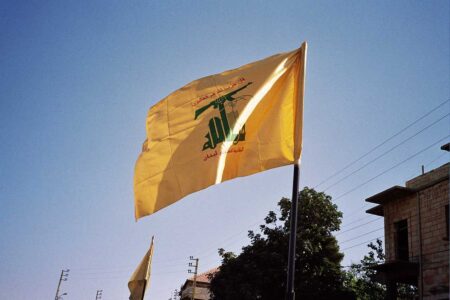
Hezbollah’s presence in southern Syria is much larger than previously revealed to the public
Hezbollah’s presence in southern Syria is much larger than previously revealed to the public, a new report by the Alma Research and Education Center has found, with some 58 sites where the terrorist group’s Southern Command and Golan Project have been deployed.
The report, which is based on Syrian opposition websites and cross-referenced with actual locations of sites (some military) damaged by Israel, revealed 58 locations belonging to the group in the southern Syrian provinces of Quneitra and Dera’a.
“In our estimation, the operational and intelligence infrastructure, which is widely deployed in southern Syria, constitutes a quality basis for Hezbollah’s ongoing activities in the sector, with an emphasis on intelligence gathering and operational planning,” the report read.
Syrian troops recaptured southern Syria seven years after losing the area to rebel groups and returned to their positions along with Hezbollah operatives and Iranian-backed troops.
Though the Israeli military revealed Hezbollah’s network on the Syrian Golan Heights last year, the deployment of the group’s forces was not completely known, with less than a dozen places known in the province of Quneitra.
In the newly released report, Alma identified 28 locations with Hezbollah forces deployed as part of the Southern Command unit and another 30 locations where there is a presence of cells operating under the Golan Project.
“These two units, the ‘Southern Command’ and the ‘Golan File,’ pose an ongoing operational and intelligence challenge for the State of Israel and stability in the region,” the report said, adding that it was “able to reach exact coordinates in some places and a general location in the rest.”
The Southern Command, led by Munir Ali Naim Shaiti, is the Hezbollah unit in charge of southern Syria, whose main function is to create a Hezbollah infrastructure in the area and not only gather intelligence on the IDF but train the Syrian Arab Army (SAA) 1st Corps for war with Israel.
The report by Alma found 28 sites where the Southern Command is deployed, “located from the border with Israel in the west to the Dera’a-Damascus highway in the east, [and] from the village of Arana in the north of Quneitra province to the city of Dera’a and its surroundings in the south.”
Although the commanders of the Southern Headquarters are all Lebanese Hezbollah, the troops are all local Syrians.
The report said the unit is “present and integrated” in every base and central headquarters of the SAA in the area, as well as in observation posts (including five major observation complexes overlooking Israel) and field operation headquarters, which serve as “joint coordination headquarters for Hezbollah and the Syrian army with the presence of representatives of the Iranian Quds Force.”
The Golan Project is under the command of Ali Mussa Daqduq and has its headquarters in Damascus and Beirut. Last year, there were tens of operatives operating in the Syrian towns of Hadar, Quneitra and Erneh who collected intelligence on Israel and military movement on the Israeli Golan Heights.
Since then, another 10 villages in Quneitra province and another 14 villages in Dera’a province have active cells belonging to the Golan Project, bringing the total number of cells near the Israeli border to 30.
In addition to coordinates, the report also names the commanders of each cell.
“The cells are deployed in the area near the Israeli border, on one hand, and in the area surrounding the city of Dera’a, which is defined by Hezbollah as a strategic area, on the other hand,” the report said.
All actions of operatives are said to be compartmentalized and kept secret from one another and the local population, in order to advance the project. According to Alma, the operatives receive a monthly salary of $200 per operative and $500 per commander directly from Hezbollah.
The operatives, members of local Syrian pro-military militias and even former rebels, have weaponry available from the civil war and, if needed, will receive additional weaponry from Lebanon or existing arsenals kept by Hezbollah and Iran in Syria.
While some of the operatives have taken part in attacks against Israel in the past, other local Syrian villagers have joined for financial reasons. Some of the operatives have undergone training by Hezbollah in sabotage, sharpshooting and firing Grad rockets.
“In our estimation, the level of professionalism and readiness of the ‘Golan File’ units enables an attack to be carried out,” the report said, adding that attacks by these units “have the potential to cause damage to civilians and IDF soldiers.”
The Southern Command, meanwhile “is currently working to realize operational and intelligence infrastructure with a high level of readiness for Hezbollah’s operations in southern Syria, as part of the opening of another front from the Syrian border against Israel alongside the Lebanese front,” the report said.
Cells belonging to the Golan Project and Southern Command have already carried out attacks against the IDF; and Israel, which has stated that it will not allow Hezbollah to entrench itself on the Golan Heights, has, according to foreign reports, carried out several strikes against operatives belonging to the two.
Should a war break out in the north, the IDF expects it will not be confined to one front but will be along the entire northern border with both Lebanon and Syria.
Source: JP





